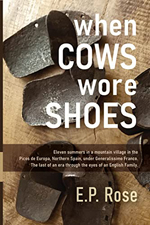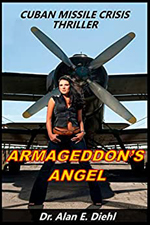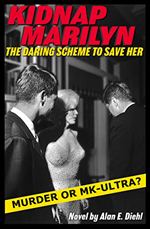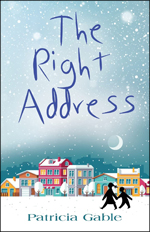E.P. Rose and Patricia Smith Wood are examples of the diverse membership of SouthWest Writers (SWW) who write in several genres and consistently produce excellent work for their readers. These award-winning authors each had one new release within the last year and have more than one interview posted on the SWW website.
Author, sculptor, and poet Elizabeth Rose (writing as E.P. Rose) has published three memoirs, a collection of poems and artwork, and a book of children’s verse. Her latest memoir release is When Cows Wore Shoes (2022) which has been called “a sensitive portrait in words and photos of hardship, poverty, loss, and longing of a time and place lost to history.” Visit Liz’s website at GalisteoLiz.com and her Amazon author page. For more about her work, read her 2015 and 2019 SWW interviews.
 What would you like readers to know about the story you tell in When Cows Wore Shoes?
What would you like readers to know about the story you tell in When Cows Wore Shoes?
Romanticized maybe, harshly honest, the book describes the final years of a rural way of life during Franco’s reign that we can only dream of today. I’d like readers to think back to a time when man had no use for machines or money, a time when cows really did wear shoes, and people threshed grain on a communal village threshing floor with wooden sledges embedded with knife-sharp flint stones; where the only sounds were the calls of villagers and the sigh of the sledges sliding over the golden grain.
What led to your decision to spend eleven summers in rural Spain?
Stuck in London in the late 1960s, I had nightmares that if I were to suddenly die, my two boys would never know there were choices…other ways, other cultures to explore than chasing material success. The British Way was not the only way. London in July and August was no place for my 4- and 6-year-old boys to spend the long British school holidays. I wanted them to roam free, to have the freedom to develop their imaginations as I had as a child.
Sticking the proverbial pin in a map, we found Ruesga, a small mountain village in northern Spain. No electricity, running water, shops, and no shared language, the village boasted two bars, a church, mountains to explore, and a twenty-mile long lake to go swimming. It took time, but once we began working in the fields beside the villagers, and acquired a little Spanish, finally we were accepted. Embedded with Ruesga’s village people, we discovered the real meaning of wealth, success, and civilized. Through them I learned Small truly is Beautiful. Armed with my Kodak Box Brownie camera, though I had no idea at the time, my photographs captured agricultural methods and tools first recorded in the 3rd millennium BC.
Why did you write this memoir?
Mainly I wrote the book for myself, my boys, and for those of us who question aspects of the world’s modernization. Also, I wanted to remind us there are simpler ways to live. And I wrote the book for posterity. How pompous those words sound. But truth to say, by happy accident, When Cows Wore Shoes does indeed record a slice of rural history that ended with Franco’s death. In 1975, civilization happened. Electricity, plumbing, communication, transport, telephones, tractors, machines, bidets and television, and money, money, money catapulted Ruesga into the twentieth century. The Spain we knew was gone. So it may be that during our final summer in Spain—our village friends, my boys and I—may have witnessed the last threshing sled in use, the last field of wheat scythed by hand, and the last cow wearing shoes. Fields died. Lanes grew over impassable. Carts, sledges, yolks lay unused and rotting. Cows forgot how to work.
Do you have a favorite chapter in the book or did a portion of it affect you more than others as you wrote?
Maybe chapter 17, Juanna’s picnic or chapter 16, Juanna’s birthplace. Both illustrate the plus and minus sides of isolation. Then there’s chapter 18, Ignacio’s chapter, of course. His untimely and unnecessary death. And, and… As I recalled each detail, I relived what I have lost.
How did you go about choosing the title?
When I mentioned my time in Spain when cows wore shoes, people assumed I was joking. Then they became intrigued. That was it, I’d found the hook I’d been looking for.
Tell us how When Cows Wore Shoes came together.
Deciding how to marry factual information and the personal without sounding like a manual or travel book took at least two years to evolve. Thanks to Covid’s gift of time, I was able to edit, edit, and re-edit again and again. Fed up with incompetent and expensive editors, I decided I could edit at least as well as they did. It must have worked somewhat. When Cows Wore Shoes won first place in the Self-Editing category of the 2023 New Mexico Press Women Communications Contest.
A writer friend and I have met for two hours a week now for over ten years. Not to make nicey-nice comments, oh no, our critique of each others’ work is too often harshly to the point. A writer’s master class, we laugh. For example, we might ask…Went? Went? BORING. Did the person skip, slouch? And beautiful? What does the word “beautiful” really bring to mind?
Do you have a message or a theme that recurs in your writing?
Seems I’m drawn to nonfiction. I really enjoy creating something readable without information dumping…thank you SouthWest Writers from whom I learned this lesson, and all I know about the craft of writing.
Is there anything else you would like readers to know?
I’ve nearly finished compiling the short stories I’ve written over the past ten-plus years into a book—The Long and the Short and the Tall. Looking for a common thread to connect the stories, I realized the common thread was me. Each story reflects something that happened, an impression, a reaction I had as an immigrant to America. A separate page records a potted autobiography as an introduction. The short story follows.
Once my book of short stories is formatted and published, I’ll get back to writing the prequel to Poet Under a Soldier’s Hat (20,000 words along) titled A Raj Baby Speaks. Set in India, my autobiography chronicles the not-so-perfect life of a child born into the British Raj.
Also, once a month, I read at the Santa Fe poetry group open mic get-together at Theatro Paraguas. Recently I’ve focused on rewriting a prose story as a prose poem.
Patricia Smith Wood is the author of the Harrie McKinsey Mysteries. After publishing the fourth book in the series, she took a break from that genre to write a historical biography of her mother’s life. In 2022, Aakenbaaken & Kent released Raising Ruby: The Amazing True Story of a Twentieth Century Woman. You’ll find Pat on her website at PatriciaSmithWood.com and on Facebook and Twitter. For more about her work, read her 2015, 2017, and 2020 SWW interviews.
 What do you hope readers will take away from Raising Ruby?
What do you hope readers will take away from Raising Ruby?
I have difficulty with the passage of time. It moves so fast, and I can’t keep up. When I realized the dawn of the 21st Century was now 23 years past, I thought about how many new “adults” had been born since then. I have the impression they don’t know much of what people dealt with in the 20th Century. If I could tell my mother’s story and liberally include the history of her time, perhaps these “new” adults would have a better understanding about older generations.
How much pressure did you feel to get your mother’s story just right?
I don’t think I felt pressure, but I did want her story written so the reader could understand the past. Unless people learn how different life was for their ancestors, they can’t comprehend the struggles, the hard work, and a raft of other issues they lived with. I particularly wanted my audience to know how different life was 100 or even 50 years ago. By telling Ruby’s story and intertwining the history she lived, I hope the reader will give the older generation some slack.
How did the book come together?
I first thought about writing her story within a year of her death. It took me another year to get serious about it and start writing. It took me about three years to get it done (what with researching historical events and editing). Aakenbaaken & Kent, the publisher for my mysteries, said they would like to publish Raising Ruby.
Tell us about Ruby, her flaws and strengths, and why readers will connect with her.
When you read her story, I think you’ll be impressed with her ability (at a young age) to stand up for herself. She never minded working hard, and she had definite ideas about how she wanted to live her life. She saw a vision for herself that her siblings and most of her other relatives didn’t understand. She taught herself how to do a lot of things, and she was never afraid of trying something new. Even as a child, Ruby knew what she wanted. That can be good or bad, depending on the situation. She grew up with a step-father who wasn’t kind and seemed to resent her. Her emancipation came early on, and she went out on her own. These were her strengths. Some of her flaws were fairly petty: impatience, trying to take on too many projects, and often being too critical of people who didn’t live up to her standards.
This historical biography is a departure from your Harrie McKinsey Mystery series. When did you know you wanted to write your mother’s story, and what prompted the push to begin the project when you did?
That’s a really good question! After finishing Murder at the Petroglyphs, I couldn’t come up with a story for the next book. That’s when I thought about doing a book about my mom and about the history she lived through. I had lots of stories she told me over the years. I also found a box of spiral notebooks. After she, my dad, and my little brother moved away from Albuquerque, she always kept a notebook on the kitchen counter by the telephone. She made notes to herself and my dad and brother. Soon, my brother and my dad did the same thing. I found a box of notebooks and spent hours reading. I found dates for events throughout the late 1960s and up until the late 1990s. It helped me be accurate about many of the things I wrote about.
Was there anything surprising you discovered while doing research for this book?
I was surprised when I kept discovering more and more things to write about. I really had to pick and choose because we did not want a 300-page book to publish with the cost of printing these days!
What writing projects are you working on now?
I’m sort of torn. I feel a need to get another mystery out there, but I still haven’t found the exact mysterious element. So, I’m thinking of writing a book about my father’s side of the family. It’s still only an idea, and I might decide it’s too much to handle after going down that road with Ruby. We’ll have to wait and see where my muse takes me!
 KL Wagoner (writing as Cate Macabe) is the author of This New Mountain: a memoir of AJ Jackson, private investigator, repossessor, and grandmother. Kat has a speculative fiction blog at klwagoner.com and writes about memoir at ThisNewMountain.com.
KL Wagoner (writing as Cate Macabe) is the author of This New Mountain: a memoir of AJ Jackson, private investigator, repossessor, and grandmother. Kat has a speculative fiction blog at klwagoner.com and writes about memoir at ThisNewMountain.com.
 What is at the core of this memoir collection?
What is at the core of this memoir collection? KL Wagoner (writing as Cate Macabe) is the author of This New Mountain: a memoir of AJ Jackson, private investigator, repossessor, and grandmother. Kat has a speculative fiction blog at klwagoner.com and writes about memoir at ThisNewMountain.com.
KL Wagoner (writing as Cate Macabe) is the author of This New Mountain: a memoir of AJ Jackson, private investigator, repossessor, and grandmother. Kat has a speculative fiction blog at klwagoner.com and writes about memoir at ThisNewMountain.com.








 Su Lierz writes dark fiction, short story fiction, and personal essays. Her short story “Twelve Days in April,” written under the pen name Laney Payne, appeared in the 2018 SouthWest Writers Sage Anthology. Su was a finalist in the 2017 and 2018 Albuquerque Museum Authors Festival Writing Contest. She lives in Corrales, New Mexico, with her husband Dennis.
Su Lierz writes dark fiction, short story fiction, and personal essays. Her short story “Twelve Days in April,” written under the pen name Laney Payne, appeared in the 2018 SouthWest Writers Sage Anthology. Su was a finalist in the 2017 and 2018 Albuquerque Museum Authors Festival Writing Contest. She lives in Corrales, New Mexico, with her husband Dennis.
































